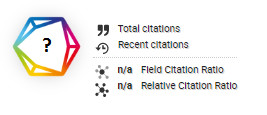Development of an Augmented Reality Application for Chemistry Molecule Learning in Inclusive Schools
DOI:
https://doi.org/10.46984/sebatik.v28i2.2480Keywords:
Special Neecs Children (SNC), Computer Vision, Chemistry Lessons, Augmented Reality TechnologyAbstract
Education for Special Needs Children (SNC), particularly those on the autism spectrum, requires unique and tailored teaching methods due to significant differences in their learning processes compared to typical children. The use of appropriate teaching tools and media is essential to help children with autism better understand learning materials, including Chemistry lessons in inclusive schools. One promising approach is the development of learning tools based on computer vision technology. This technology can assist SNC students and teachers in teaching chemical concepts through three-dimensional objects, making the teaching and learning process more effective and engaging. This research aims to integrate real objects with virtual elements in Chemistry learning environments at inclusive schools using augmented reality (AR) and image-tracking technology. The learning process will occur in real-time, enabling students with special needs to interact more intensively with the subject matter. The long-term goal of this research is to evaluate the positive impact of AR on improving SNC students' learning outcomes in Chemistry. The results of this research are expected to contribute to the application of AR technology in Chemistry education at inclusive schools, enhancing inclusivity and effectiveness in the learning process.
References
American Psychiatric Association. (2013). Diagnostic and Statistical Manual of Mental Disorders. American Psychiatric Association. https://doi.org/10.1176/appi.books.9780890425596
Astarini, D. D. (2020). Peran Aktif Orangtua Dan Guru Sekolah Inklusi Dalam Meningkatkan Kemampuan Komunikasi Dan Interaksi Sosial Anak Penderita Autisme. Psikodidaktika: Jurnal Ilmu Pendidikan, Psikologi, Bimbingan Dan Konseling, 5(1), 93. https://doi.org/10.32663/psikodidaktika.v5i1.1158
Bacca, J., Baldiris, S., Fabregat, R., Graf, S., & Kinshuk. (2014). Augmented Reality Trends in Education: A Systematic Review of Research and Applications. Journal of Educational Technology & Society, 17(4), 133–149. http://www.jstor.org/stable/jeductechsoci.17.4.133
Brown, T. L., LeMay, H. E., Bursten, B. E., Murphy, C. J., Woodward, P. M., Stoltzfus, M. W., & Lufaso, M. W. (2017). Chemistry: The Central Science. Pearson Education, Limited. https://books.google.co.id/books?id=lMtNtAEACAAJ
Chotimah, M. (2021). Peran Guru Pendamping Dalam Meningkatkan Kemampuan Bersosialisasi Peserta Didik Berkebutuhan Khusus di Madrasah Ibtidaiyah Terpadu Ar Roihan Lawang. Turatsuna: Jurnal Keislaman Dan Pendidikan, 3(1), 84–100.
Coimbra, MMath. T., Cardoso, T., & Mateus, A. (2015). Augmented Reality: An Enhancer for Higher Education Students in Math’s Learning? Procedia Computer Science, 67, 332–339. https://doi.org/10.1016/j.procs.2015.09.277
Fernandes, H. S., Cerqueira, N. M. F. S. A., & Sousa, S. F. (2021). Developing and Using BioSIM AR , an Augmented Reality Program to Visualize and Learn about Chemical Structures in a Virtual Environment on Any Internet-Connected Device. Journal of Chemical Education, 98(5), 1789–1794. https://doi.org/10.1021/acs.jchemed.0c01317
Fitriyah, F. K. (2019). Pengaruh Permainan Tradisional Gobak Sodor Dalam Bimbingan Kelompok Terhadap Peningkatan Interaksi Sosial Anak Autis. Education and Human Development Journal, 4(2), 13–20. https://doi.org/10.33086/ehdj.v4i2.1293
Fitriyah, I. J., Setiawan, A. M., Marsuki, M. F., & Hamimi, E. (2021). Development of augmented reality teaching materials of chemical bonding. 020043. https://doi.org/10.1063/5.0043235
Jdaitawi, M. T., & Kan’an, A. F. (2022). A Decade of Research on the Effectiveness of Augmented Reality on Students with Special Disability in Higher Education. In Contemporary Educational Technology (Vol. 14, Issue 1). Anadolu University, Faculty of Communication Sciences. https://doi.org/10.30935/cedtech/11369
Kasirah, I. (2011). Kompetensi Pedagogis Guru Plb Dalam Meningkatkan Prestasi Belajar Anak Berkebutuhan Khusus. Perspektif Ilmu Pendidikan, 24(XV), 163–173. https://doi.org/10.21009/PIP.242.6
Kelly, R., & Hansen, S. J. R. (2017). Exploring the Design and Use of Molecular Animations that Conflict for Understanding Chemical Reactions. Química Nova. https://doi.org/10.21577/0100-4042.20170043
Lord, C., Elsabbagh, M., Baird, G., & Veenstra-Vanderweele, J. (2018). Autism spectrum disorder. The Lancet, 392(10146), 508–520. https://doi.org/10.1016/S0140-6736(18)31129-2
Midak, L. Y., Kravets, I. V, Kuzyshyn, O. V, Baziuk, L. V, & Buzhdyhan, K. V. (2021). Specifics of using image visualization within education of the upcoming chemistry teachers with augmented reality technology. Journal of Physics: Conference Series, 1840(1), 012013. https://doi.org/10.1088/1742-6596/1840/1/012013
Nurfadhillah, S., Nurrohmah, N., Prasasti, D., Uswatun, U., Maulida, F., As-Sikah, S., Agustina, N., & El-Abida, S. F. (2021). Peran Guru dalam Mengembangkan Interaksi Sosial Anak Autis di SDN Kunciran 07. ANWARUL, 1(1), 196–203. https://doi.org/10.58578/anwarul.v1i1.71
Pertiwi, M., Andriany, A. R., Pratiwi, A., & Mulamukti, A. (2021). Gambaran Peran Orang Tua dalam Efektivitas Model Pembelajaran Daring pada Siswa Berkebutuhan Khusus. Syntax Literate; Jurnal Ilmiah Indonesia, 6(10), 5118.
Pham, H. (2023). Springer handbook of engineering statistics. Springer Nature.
Schmalstieg, D., & Hollerer, T. (2016). Augmented Reality: Principles and Practice. Pearson Education. https://books.google.co.id/books?id=qPU2DAAAQBAJ
Tamansa, S. A., Peronika, R. Y., Harefa, I. J., & Harefa, N. (2023). Studi Kelayakan Bentuk Komunikasi Modul Kimia untuk ABK (Anak Berkebutuhan Khusus) Tunawicara pada Materi Bentuk Molekul. Proceedings of Life and Applied Sciences, 1.
Uselton, M. R. (2020). MoleculAR Geometry: Chemical Visualizations in Augmented Reality.
Wardah, E. Y. (2019). Peranan guru pembimbing khusus lulusan non-pendidikan luar biasa (PLB) terhadap pelayanan anak berkebutuhan khusus di sekolah inklusi kabupaten Lumajang. JPI (Jurnal Pendidikan Inklusi), 2(2), 93–108.
Downloads
Published
How to Cite
Issue
Section
License
Copyright (c) 2024 Fajar Ramadhani, Bagus Satria, Imron Imron, Eko Junirianto, Eny Maria

This work is licensed under a Creative Commons Attribution 4.0 International License.
Authors retain all their rights to the published works, such as (but not limited to) the following rights; Copyright and other proprietary rights relating to the article, such as patent rights, The right to use the substance of the article in own future works, including lectures and books, The right to reproduce the article for own purposes, The right to self-archive the article








